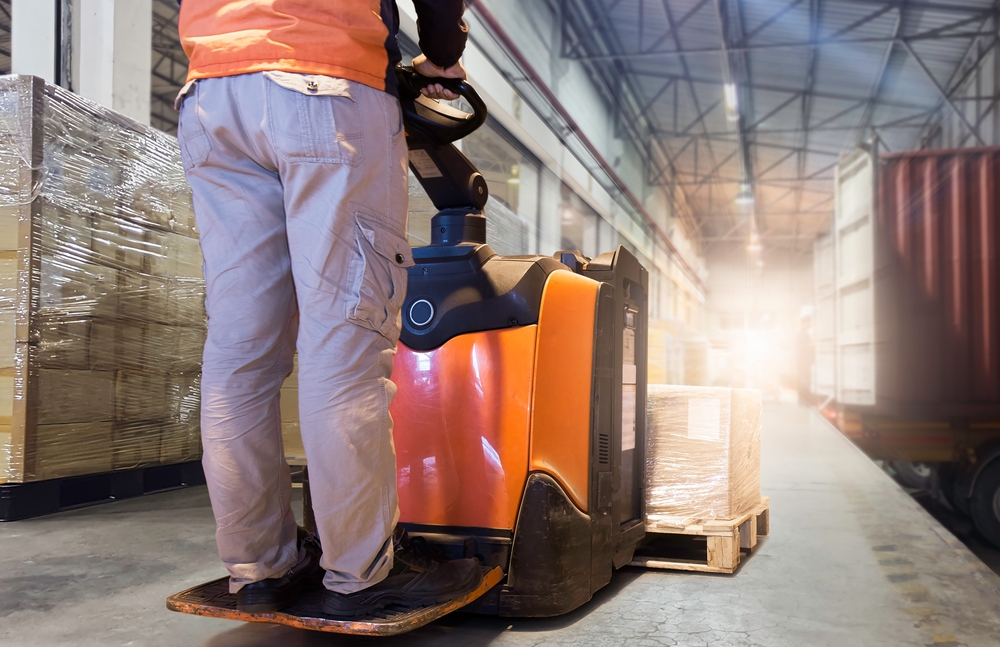Essential Electric Pallet Jack Training and Safety Tips
Posted by: admin on April 1, 2025
 Warehouses rely on powered equipment to move goods safely, and among the most widely used machines is the electric pallet jack. Designed for efficiency and control, these vehicles offer convenience, but without proper training, they present risks. Operators must understand not just how to operate a pallet jack, but how to do so safely. Completing certified pallet jack training helps reduce workplace injuries and ensures full compliance with OSHA regulations.
Warehouses rely on powered equipment to move goods safely, and among the most widely used machines is the electric pallet jack. Designed for efficiency and control, these vehicles offer convenience, but without proper training, they present risks. Operators must understand not just how to operate a pallet jack, but how to do so safely. Completing certified pallet jack training helps reduce workplace injuries and ensures full compliance with OSHA regulations.
Why Electric Pallet Jack Training Matters
Electric pallet jacks appear simple to operate but carry hazards similar to larger machinery. OSHA classifies them as powered industrial trucks, placing them under the same compliance umbrella as forklifts. Training teaches users how to assess risks, navigate warehouses, and prevent accidents before they happen. Improper use of powered equipment can lead to serious injury or expensive violations.
Understanding the Basics: What Is an Electric Pallet Jack?
Electric pallet jacks lift pallets just high enough to clear the floor, using motorized wheels to move loads. Unlike forklifts, they don’t stack materials vertically. Their two-prong forks fit beneath standard pallets, allowing for easy lifting and transport. Many come in walk-behind or stand-on models, with the latter offering greater mobility for high-traffic zones.
Why Electric Pallet Jack Safety Is Critical
These machines might seem less intimidating than forklifts, but they carry significant risk when misused. Slippery floors, tight corners, or distracted operation can result in crushed limbs or worse. OSHA mandates safety training to reduce these risks. Teaching proper electric pallet jack safety procedures keeps warehouses running smoothly and workers protected.
Key Components of Electric Pallet Jack Training
Effective training focuses on:
- Pre-Use Inspections: Check for wear, battery charge, fork condition, and overall readiness.
- Safe Driving and Load Handling: Keep loads centered, maintain a safe speed, and avoid pulling the machine.
- Emergency Procedures and Hazard Recognition: Understand how to react to blocked paths, spills, or mechanical failures.
- Hands-On Demonstration: Show proficiency in real operating conditions, including docking, maneuvering, and braking.
Best Safety Tips for Operating an Electric Pallet Jack
- Balance the Load: Distribute weight evenly to avoid tipping or slipping.
- Drive at a Safe Speed: Avoid abrupt turns, especially near doorways or corners.
- Keep Limbs Clear: Never walk backward with feet under the jack, and remain clear of pinch points.
- Use Visibility Aids: In congested areas, mirrors or spotters help reduce blind zone accidents.
Common Mistakes to Avoid When Operating Electric Pallet Jacks
- Overloading: Exceeding capacity shortens equipment lifespan and increases injury risks.
- Neglecting Maintenance: Ignoring battery upkeep or fork damage leads to unexpected malfunctions.
- Speeding or Inattentive Use: Many accidents happen because operators assume slow-moving machines are risk-free.
FAQs on Electric Pallet Jack Safety and Training
Do You Need Training to Use an Electric Pallet Truck?
Yes. Regulation 9 of the Provision and Use of Work Equipment Regulations 1998 (PUWER) requires employers to ensure workers are adequately trained before operating powered equipment. This includes understanding how the equipment works, identifying risks, and applying safety precautions.
How Long Does Certification Take?
Most online training programs, like those from CertifyMe, take less than one hour to complete.
What Are the Main Risks with Stand-On Electric Pallet Jacks?
Pinch points, rollover hazards, and limited visibility increase risk. Training prepares operators to recognize and avoid these situations.
Get Certified Fast with CertifyMe
Electric pallet jack training ensures every operator understands the hazards and responsibilities of using powered warehouse equipment. CertifyMe makes it easy to meet OSHA compliance while empowering workers with knowledge and confidence. Our fast, online certification covers electric pallet jack safety, hands-on operation, and everything needed for a safer, smarter warehouse. Sign up today and keep your team protected with CertifyMe.
Welcome to CertifyMe.net
CertifyMe.net has offered online forklift certification since 1999. With Our Convenient online program. your employess can earn their certification in an hour or less.
Browse Online Certifications:
This low-cost program can be compeleted anytime, anywhere!






